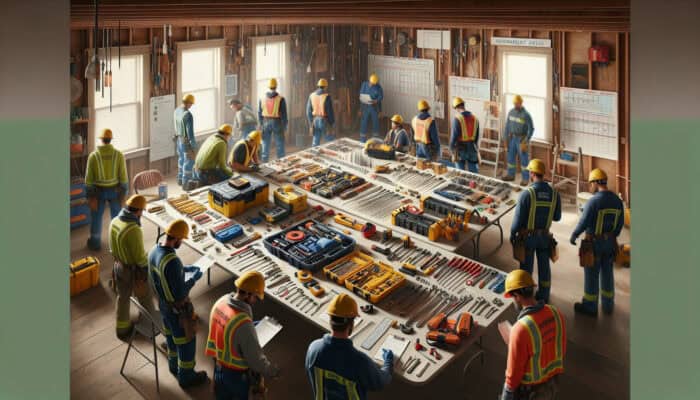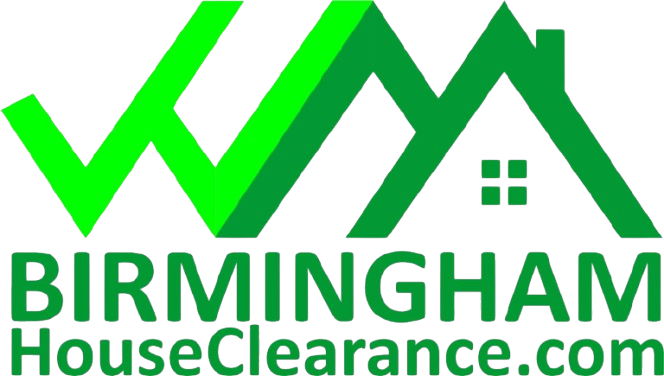Understanding UK Tool Safety Laws
What Are the Key UK Regulations?

Tool Safety Regulations for House Clearance: The key UK regulations governing tool safety encompass a range of legislation designed to safeguard workers during house clearance activities. The Health and Safety at Work Act 1974 establishes the fundamental principles of workplace safety, mandating that employers ensure, as far as reasonably practicable, the health and safety of their employees. This act serves as the cornerstone of health and safety law in the UK.
Additionally, the Provision and Use of Work Equipment Regulations 1998 (PUWER) stipulate that all equipment provided for use at work must be safe, fit for purpose, and maintained in a safe condition. This regulation is particularly relevant to house clearance, where various tools, from power drills to manual saws, are frequently employed. Furthermore, the Control of Substances Hazardous to Health Regulations 2002 (COSHH) governs the use of hazardous substances, requiring employers to assess risks and take necessary precautions to protect workers from exposure to harmful materials.
Adherence to these regulations not only reduces the risk of accidents but also fosters a culture of safety within the workplace, aligning with best practices in the house clearance industry. Compliance with these regulations is a legal requirement, and understanding their implications is crucial for anyone involved in house clearance operations.
How Do These Laws Apply to House Clearance?
The application of UK safety laws to house clearance is critical in ensuring that all tools used are safe and that workers are adequately trained. These laws enforce a framework that mandates the use of appropriate tools, the provision of personal protective equipment (PPE), and the implementation of safety protocols. For instance, when employing a chainsaw for clearing out a garden, it’s not just about having the right tool but ensuring that it is regularly serviced, in good working order, and that the operator has received proper training in its use.
Moreover, compliance with these laws helps organisations avoid the repercussions of negligence. This includes potential legal battles stemming from workplace accidents that could have been prevented through adherence to regulations. House clearance companies must invest in training sessions and safety drills focused on the correct use of tools and emergency procedures. By doing so, they not only comply with the law but also enhance their reputation as responsible service providers.
To illustrate the importance of these regulations, consider the role of risk assessments in house clearance projects. Before commencing work, a thorough assessment should be conducted to identify potential hazards associated with the tools and tasks involved. This proactive approach not only safeguards workers but also demonstrates compliance with legal mandates.
Enforcement and Penalties in the UK
Enforcement of tool safety regulations in the UK is carried out by the Health and Safety Executive (HSE), which has the authority to inspect workplaces and enforce compliance. Non-compliance with safety regulations can result in serious penalties, including hefty fines and even imprisonment for severe breaches. For house clearance companies, this could mean loss of business, as the HSE can impose improvement notices, prohibiting work until compliance is achieved.
The HSE conducts regular inspections of companies in the house clearance sector, focusing on high-risk activities and areas where safety breaches are more likely to occur. They provide guidance and support to businesses, helping them understand their legal obligations. However, the onus remains on employers to ensure that their operations meet safety standards.
Additionally, businesses may also face civil claims from employees or clients if injuries occur due to negligence in adhering to safety regulations. The financial implications can be devastating and long-lasting, not to mention the impact on a company’s reputation. To mitigate these risks, it is essential for house clearance companies to stay informed about any changes in legislation and to train staff on compliance requirements regularly.
How to Ensure Compliance During House Clearance

Ensuring compliance with tool safety regulations during house clearance requires a systematic approach. First and foremost, regularly conducting safety checks on all equipment is vital. This involves inspecting tools for any signs of wear or damage, ensuring they are in proper working condition before use. This can help prevent accidents caused by faulty equipment, a common occurrence in the house clearance industry.
Training employees on the proper use of tools is another critical component of compliance. All staff members should receive comprehensive training that covers operational procedures and emergency protocols. This training should be ongoing, with regular refreshers scheduled to reinforce safety practices and keep workers informed about new regulations and changes in procedures.
Maintaining detailed records of all safety measures is also essential for demonstrating compliance during inspections. This includes documentation of safety checks, training sessions, and any incidents that occur. By maintaining meticulous records, companies can demonstrate their commitment to safety and compliance with regulations, thereby protecting themselves in the event of an audit or investigation.
In summary, compliance in house clearance operations hinges on a proactive approach involving regular equipment checks, robust training programmes, and comprehensive record-keeping. By embedding these practices into their operations, companies can foster a culture of safety and reliability.
Expert Insights on Tool Safety Regulations for House Clearance
Include Real-World Examples of UK Compliance
Real-world examples of UK house clearance companies successfully implementing safety regulations demonstrate the effectiveness of these practices in reducing workplace incidents. Companies that prioritise compliance not only protect their workers but also enhance their operational efficiency. Numerous case studies illustrate the positive impact of adhering to safety standards.
– A leading house clearance service in London instituted a mandatory annual safety training programme, resulting in a 30% reduction in workplace accidents over two years. Workers were trained on the correct use of tools and emergency response procedures, leading to greater confidence and competence among staff.
– An Edinburgh-based company introduced a comprehensive safety audit system, where they conducted bi-monthly inspections of equipment and tools. This proactive measure highlighted potential hazards before they could lead to incidents, which significantly improved their overall safety record.
– A house clearance firm in Manchester adopted the use of personal protective equipment (PPE), such as helmets and high-visibility clothing. By ensuring all employees wore appropriate gear, they reduced the likelihood of injuries from falling objects and enhanced visibility during operations.
– A company in Birmingham leveraged technology by implementing a safety management app that tracks tool usage and maintenance schedules. This innovation not only improved compliance but also streamlined operations by ensuring that tools were serviced regularly, thus preventing breakdowns during critical tasks.
These examples underscore the importance of adopting a comprehensive approach to safety, which includes regular training, audits, and the use of technology, to ensure compliance with safety regulations in the house clearance sector.
What Are the Best Practices for UK Safety Training?

Best practices for safety training in the UK are crucial for ensuring that workers are adequately prepared to handle tools safely and effectively. Regular training sessions must be established as a fundamental part of the operational routine in house clearance companies. This training should encompass several key elements:
– Comprehensive tool usage training, focusing on specific equipment that employees will be using.
– Emergency response drills to prepare workers for potential accidents or hazardous situations.
– Risk assessment training to enable staff to identify and mitigate hazards proactively.
– Regular refresher courses to keep safety practices current and top of mind for employees.
These training elements should be tailored to the specific needs of the house clearance operation, taking into consideration the types of tools used and the unique risks associated with various clearance tasks. By conducting thorough training sessions that cover these crucial areas, employers can ensure that their staff are well-equipped to operate tools safely and respond effectively in emergencies.
Additionally, involving employees in the training process can foster a culture of safety and encourage open communication about potential hazards. When workers feel empowered to voice concerns or suggest improvements, it enhances overall safety in the workplace. By investing in robust safety training, house clearance companies can significantly decrease the likelihood of accidents and create a safer working environment for all.
Offer Expert Analysis on UK Safety Equipment
The effectiveness of safety equipment used in UK house clearance cannot be overstated. Various forms of personal protective equipment (PPE) and safety gear are designed to mitigate risks associated with tool usage and hazardous materials. An analysis of some common safety equipment reveals its critical roles in ensuring worker safety.
Gloves are a staple in house clearance operations, designed to protect hands from cuts, abrasions, and exposure to hazardous substances. The choice of gloves should be based on the specific tasks being performed; for instance, heavy-duty, cut-resistant gloves are advisable when handling sharp tools, such as saws.
Goggles are essential for eye protection, particularly when using power tools that can produce flying debris. They shield the eyes from harmful particles and prevent injuries that could lead to long-term vision impairment.
Protective clothing, such as overalls and high-visibility vests, plays a significant role in safeguarding workers. Overalls protect against sharp objects and hazardous substances, while high-visibility clothing ensures that workers are easily seen, particularly in environments with multiple hazards.
Ear protection, such as earplugs or earmuffs, is crucial when operating noisy power tools. Prolonged exposure to high noise levels can lead to hearing damage, making ear protection a necessary component of PPE in house clearance.
By regularly assessing the effectiveness of safety equipment and ensuring that it meets the required standards, companies can maintain high safety levels during house clearance operations. Investing in quality safety gear not only protects employees but also reflects a commitment to maintaining a safe working environment.
Essential Tools and Their Safety Requirements
What Tools Are Commonly Used in UK House Clearance?
In the UK house clearance industry, several tools are routinely employed, each with specific safety requirements to ensure safe usage. Understanding these tools and their associated safety measures is vital for compliance with UK regulations. Commonly used tools include:
– Hammers: Essential for dismantling furniture or fixtures, hammers must be inspected for loose heads and cracks in the handle. Proper technique is crucial to avoid injury.
– Saws: Both manual and power saws are frequently used. These tools require training on safe operation, including the use of blade guards and maintaining a clear workspace to prevent accidents.
– Drills: Power drills are indispensable for various clearance tasks. Regular checks on batteries, cords, and safety features, along with training on correct handling, are critical for user safety.
– Ladders: Often used for accessing high places, ladders must be inspected for stability, proper height, and secure footing before use. Training on ladder safety is essential to prevent falls.
– Shovels: Used for clearing debris, shovels should be regularly maintained to ensure they are in good condition, and operators should be trained in proper lifting techniques to avoid injury.
Each of these tools comes with particular safety protocols that workers must follow to mitigate risks associated with their use. Proper training and adherence to safety guidelines can significantly reduce the likelihood of accidents during house clearance tasks.
Safety Checks Before Using Tools in the UK
Before using any tools in a house clearance operation, conducting thorough safety checks is paramount. This ensures that equipment is functioning correctly and is safe for use. The following checks should be performed as standard practice:
1. Visual Inspection: Examine tools for any visible damage, such as cracks, rust, or loose parts. Any damaged tool should be taken out of service until properly repaired.
2. Safety Features: Ensure that all safety features, such as guards and safety switches, are intact and functional. For instance, a power saw should have a blade guard that operates correctly.
3. Electrical Cords: Check for fraying or damage to electrical cords, which can pose a serious electrocution risk. Cords should be safely routed to prevent tripping hazards.
4. Functional Test: If applicable, perform a functional test on the tool to ensure it operates as expected. This application is particularly necessary for powered equipment, such as drills and saws.
Conducting these safety checks before starting work not only ensures compliance with regulations but also significantly reduces the risk of workplace accidents. Moreover, fostering a culture of diligence and responsibility in performing these checks can enhance overall safety awareness among workers.
Proper Storage and Maintenance in the UK
Proper storage and maintenance of tools are critical components of safety in house clearance operations. Tools must be stored in a dry, secure location to prevent damage and reduce the risk of accidents. Factors to consider include:
– Dry Storage: Tools should be kept in a dry environment to prevent rust and deterioration. Damp conditions can cause metal tools to corrode, compromising their safety and effectiveness.
– Organised Storage: Tools should be organised in a way that allows easy access while minimising clutter. This helps prevent accidents caused by tripping over tools or equipment.
– Regular Maintenance: Tools need regular maintenance, including cleaning, sharpening, and replacing worn parts. For example, saw blades should be kept sharp to ensure efficient cutting and reduce the strain on the user.
– Inventory Management: Keeping an inventory of tools helps ensure that all equipment is accounted for and in good working condition. Regular audits can help identify tools that require replacement or repair.
Incorporating these storage and maintenance practices into daily operations not only promotes safety but also extends the lifespan of tools, contributing to overall operational efficiency in house clearance tasks. A commitment to proper tool management demonstrates professionalism and enhances the reputation of the house clearance business.
Training and Certification for Tool Use in the UK
Training and certification are essential elements of safe tool usage in the UK house clearance sector. Ensuring that workers are adequately trained reduces the likelihood of accidents and ensures compliance with legal requirements. The following practices are vital in this regard:
– Initial Training: New employees should undergo comprehensive training that covers tool safety, operational procedures, and emergency protocols. This foundational knowledge is critical for minimising risks.
– Certification Programmes: Participating in recognised certification programmes can enhance the skills of workers. Certifications provide evidence of competency and can be a selling point for clients who prioritise safety.
– Ongoing Training: Regular refresher courses are necessary to keep employees updated on any changes in safety regulations or procedures. This ongoing education reinforces the importance of workplace safety.
– Practical Assessments: Conducting practical assessments during training ensures that employees can demonstrate their proficiency in using tools safely. This hands-on approach builds confidence and competence.
By prioritising training and certification, house clearance companies can cultivate a workforce that is knowledgeable and skilled in the safe use of tools. This investment not only enhances worker safety but also positions the company as a reputable and responsible service provider in the industry.
How Can UK House Clearance Companies Ensure Compliance?
Implementing Safety Protocols in UK Operations
To ensure compliance with safety regulations, house clearance companies must develop and implement robust safety protocols tailored to their specific operations and work practices. This process involves several key steps, including:
1. Creating a Safety Policy: A comprehensive safety policy should outline the company’s commitment to health and safety, detailing procedures for the safe use of tools and equipment, as well as emergency response plans.
2. Training and Communication: Regular training sessions should be established to communicate safety protocols to all employees. This ensures that workers understand their responsibilities and are equipped to adhere to safety measures.
3. Regular Safety Audits: Conducting regular audits helps identify potential hazards and areas for improvement. These audits should assess compliance with safety procedures and regulations, facilitating ongoing enhancements.
4. Incident Reporting Procedures: Establishing clear procedures for reporting incidents, near misses, and safety concerns encourages a culture of transparency and accountability. This allows for proactive measures to be taken to prevent future incidents.
By implementing these safety protocols, house clearance companies can create a structured approach to compliance that prioritises worker safety and mitigates risks associated with tool usage. This comprehensive strategy not only meets legal obligations but also fosters a safe working environment.
What Are the Benefits of Compliance for UK Businesses?
Compliance with tool safety regulations offers a myriad of benefits for house clearance businesses operating in the UK. These advantages not only enhance the safety of workers but also contribute to the overall success of the organisation. Key benefits include:
– Enhanced Worker Safety: Compliance with safety regulations significantly reduces the risk of accidents and injuries, creating a safer working environment for employees.
– Reduced Legal Risks: Adhering to safety laws mitigates the likelihood of legal action stemming from workplace accidents. This reduces potential financial liabilities and protects the company’s reputation.
– Improved Business Reputation: Companies that prioritise safety are viewed more favourably by clients, leading to increased trust and a competitive edge in the market.
– Lower Insurance Premiums: Compliant businesses often benefit from lower insurance premiums, as insurers recognise their commitment to safety and risk management. This can result in significant cost savings over time.
In summary, compliance with tool safety regulations not only safeguards workers but also enhances the operational efficiency and reputation of house clearance companies. Investing in safety measures ultimately pays off through improved outcomes and reduced risks.
Documentation and Record-Keeping in the UK
Maintaining accurate documentation and records is a crucial aspect of ensuring compliance with safety regulations in the UK house clearance industry. Proper record-keeping serves multiple purposes, including demonstrating compliance during inspections and facilitating continuous improvement in safety practices. Key documentation practices include:
1. Safety Training Records: Keeping detailed records of all safety training sessions, including dates, topics covered, and attendance, is vital for compliance. This documentation provides evidence of training efforts and helps identify areas for improvement.
2. Equipment Inspection Logs: Regular safety checks on tools and equipment should be documented to track maintenance and repairs. This includes records of inspections, repairs performed, and any incidents that may have occurred.
3. Incident Reports: Documenting all workplace incidents, regardless of severity, is essential for understanding safety trends and implementing corrective actions. This information can guide future training and safety improvements.
4. Safety Audit Reports: Conducting and recording the findings of regular safety audits helps companies identify compliance gaps and areas for improvement, contributing to ongoing enhancements in safety practices.
By prioritising thorough documentation and record-keeping, house clearance companies can effectively demonstrate compliance with UK regulations and foster a culture of safety within their operations. This commitment to transparency and accountability not only enhances overall safety but also bolsters the organisation’s reputation.
Regular Compliance Audits in the UK
Conducting regular compliance audits is an essential practice for house clearance companies aiming to maintain adherence to UK safety regulations. Audits provide a comprehensive evaluation of safety practices and highlight areas for improvement. Key components of effective compliance audits include:
– Scheduled Audits: Establishing a regular audit schedule ensures that compliance checks are conducted consistently. This can range from quarterly to annual audits, depending on the size and scope of the business.
– Comprehensive Checklists: Utilising detailed checklists during audits allows for a thorough examination of safety protocols, equipment condition, training records, and compliance with regulations.
– Employee Involvement: Engaging employees in the audit process fosters a culture of safety and accountability. Their insights can offer valuable perspectives on potential hazards and areas that require attention.
– Action Plans: Following audits, it is crucial to create action plans addressing any identified compliance gaps. This includes assigning responsibilities and setting timelines for implementing improvements.
Regular compliance audits not only help ensure adherence to safety regulations but also promote continuous improvement in safety practices. By systematically evaluating their operations, house clearance companies can enhance their safety standards and further protect their workers.
Training Staff on UK Compliance Requirements
Training staff on UK compliance requirements is vital for ensuring that all employees are aware of their responsibilities in maintaining a safe working environment. Comprehensive training programmes should encompass various aspects of compliance, including:
– Regulatory Overview: Providing employees with an understanding of key UK safety regulations and their implications for daily operations is essential. This knowledge fosters a culture of safety awareness.
– Specific Procedures: Training should cover the specific safety procedures and protocols that employees must follow when using tools and equipment. This includes understanding risk assessments and emergency response actions.
– Ongoing Education: Regular updates on changes in regulations and best practices are crucial for keeping staff informed. This may involve refresher courses or weekly safety meetings to discuss new developments and updates.
– Assessment of Understanding: Implementing assessments following training sessions helps gauge employees’ understanding of compliance requirements. This can help identify areas that need further clarification or reinforcement.
By prioritising compliance training, house clearance companies can ensure that employees are knowledgeable and equipped to uphold safety standards. A well-trained workforce contributes to a culture of safety, ultimately protecting employees and enhancing operational efficiency.
Research-Backed Benefits of Tool Safety Regulations for House Clearance
Provide Actionable Steps for Reducing Accidents
Reducing accidents in house clearance operations is paramount for ensuring worker safety and maintaining compliance with UK regulations. Implementing actionable steps can significantly decrease the likelihood of incidents. Key strategies include:
– Conducting Regular Tool Inspections: Establishing a routine for inspecting tools before use ensures they are in a safe working condition. This can prevent accidents caused by faulty or damaged equipment.
– Comprehensive Employee Training: Instituting regular training for employees on safety procedures and proper tool usage is essential. This education enables workers to understand potential hazards and learn how to mitigate them.
– Utilising Appropriate Safety Gear: Ensuring that all employees wear the appropriate personal protective equipment (PPE) reduces the risk of injury. This includes gloves, goggles, and protective clothing specifically designed for the tasks at hand.
– Encouraging Reporting of Hazards: Fostering an environment where employees feel comfortable reporting potential hazards or unsafe conditions can help identify risks before they lead to accidents.
By implementing these actionable steps, house clearance companies can significantly reduce workplace accidents and enhance the overall safety of their operations. A proactive approach to safety not only protects workers but also supports compliance with legal requirements.
How Do Safety Regulations Impact UK Worker Morale?
Safety regulations have a profound impact on worker morale within the UK house clearance industry. When employees feel safe and protected, their overall job satisfaction and productivity increase. The relationship between safety and morale can be understood through several key factors:
– Sense of Value: When companies prioritise safety, employees feel valued and respected. This fosters a positive work environment, where employees are motivated to perform at their best.
– Reduced Anxiety: Knowing that safety measures are in place alleviates anxiety about potential workplace accidents. This peace of mind allows employees to focus on their tasks rather than worrying about their safety.
– Increased Engagement: A commitment to safety encourages employee engagement. Workers are more likely to contribute ideas for improving safety practices and reporting hazards when they feel their well-being is a priority.
– Lower Turnover Rates: Companies that prioritise safety often experience lower turnover rates. Employees are more likely to remain with an organisation that invests in their health and well-being, leading to a stable workforce.
In summary, the implementation of safety regulations not only protects workers but also enhances morale, leading to increased productivity and job satisfaction. A positive work environment is essential for the long-term success of house clearance operations.
Statistical Evidence of Safety Improvements in the UK
Research demonstrates that adherence to safety regulations has led to significant improvements in workplace safety within the UK house clearance industry. Statistical evidence highlights the positive impact of compliance on reducing accidents and injuries. Key findings include:
– A report from the Health and Safety Executive (HSE) indicated that the overall rate of workplace injuries in the UK has decreased by over 25% in the past decade, largely due to stricter enforcement of safety regulations.
– Companies that implemented comprehensive safety training programmes reported a 40% reduction in accidents within the first year, showcasing the effectiveness of investing in employee education.
– Studies show that organisations with robust safety protocols experience fewer claims related to workplace injuries, resulting in substantial savings on insurance premiums and legal fees.
– A survey conducted among house clearance companies revealed that 90% of respondents acknowledged a direct correlation between safety training and reduced workplace incidents, underlining the importance of compliance.
These statistics illustrate the tangible benefits of implementing safety regulations and training programmes in the house clearance sector. By prioritising safety, companies can significantly enhance worker protection and improve operational efficiency.
Economic Benefits of Implementing Safety Regulations
Implementing safety regulations in the UK house clearance industry not only enhances worker safety but also yields significant economic benefits. By reducing the frequency and severity of workplace accidents, companies can realise substantial cost savings. Key economic advantages include:
– Reduced Accident-Related Costs: Fewer accidents translate to lower costs associated with medical expenses, lost wages, and potential legal claims. This financial relief can significantly bolster a company’s bottom line.
– Lower Insurance Premiums: Compliance with safety regulations often leads to reduced insurance premiums. Insurers recognise organisations that maintain high safety standards as lower risk, resulting in financial savings for the business.
– Improved Productivity: A safe working environment fosters productivity, as employees can work more efficiently without the fear of accidents or injuries. This increased output can enhance profitability.
– Enhanced Reputation: Companies that prioritise safety are more likely to be viewed positively by clients and customers. A strong reputation can lead to increased business opportunities and client retention.
In conclusion, investing in safety regulations not only protects employees but also provides significant economic advantages for house clearance companies. By fostering a culture of safety, businesses can enhance their operational efficiency and long-term sustainability.
Trusted Strategies for Tool Safety Regulations for House Clearance
Developing a Comprehensive Safety Plan
Developing a robust safety plan is essential for house clearance companies seeking to ensure compliance with tool safety regulations. A comprehensive safety plan should encompass various components, including:
– Risk Assessments: Conduct thorough risk assessments for all tasks involving tool usage. This helps identify potential hazards and develop effective strategies to mitigate risks.
– Emergency Procedures: Establish clear emergency procedures for responding to accidents or incidents. This includes evacuation plans, first-aid protocols, and communication strategies for alerting emergency services.
– Regular Safety Meetings: Schedule regular safety meetings to review safety protocols, discuss recent incidents, and promote ongoing safety awareness among employees. This reinforces the importance of safety in daily operations.
– Continuous Improvement: Incorporate feedback from employees regarding safety practices and areas for improvement. This approach ensures that the safety plan evolves in response to changing circumstances and operational needs.
By developing a comprehensive safety plan, house clearance companies can create a structured framework for ensuring compliance with tool safety regulations. A proactive approach to safety fosters a culture of responsibility and accountability, ultimately enhancing worker protection and safety.
What Role Does Technology Play in UK Safety?
Technology plays an increasingly vital role in enhancing safety within the UK house clearance industry. The integration of modern tools and systems can significantly improve compliance with safety regulations and streamline operations. Key technological advancements contributing to safety include:
– Safety Management Apps: These applications allow companies to track tool usage, maintenance schedules, and compliance with safety protocols. Real-time data helps identify potential risks and promotes accountability among workers.
– Virtual Training Platforms: Online training platforms enable companies to deliver safety training programmes efficiently. Employees can access training materials and assessments at their convenience, ensuring that safety education is easily accessible.
– Wearable Technology: Devices such as smart helmets and safety vests equipped with sensors can monitor workers’ environments and alert them to potential hazards. This technology enhances situational awareness and promotes proactive safety measures.
– Drones for Site Inspections: Drones can be utilised for conducting site inspections, identifying hazards from above without putting workers at risk. This technology allows for more thorough assessments of job sites before commencing clearance operations.
By embracing technology, house clearance companies can enhance their safety standards and ensure compliance with regulations. The integration of these innovations not only protects employees but also improves operational efficiency.
Continuous Improvement and Feedback in the UK
Continuous improvement and feedback play a crucial role in maintaining high safety standards within the UK house clearance industry. Establishing a culture of open communication and continuous evaluation can lead to enhanced safety practices. Key strategies for fostering continuous improvement include:
– Encouraging Employee Feedback: Create an environment where employees feel comfortable sharing their thoughts on safety practices and suggesting improvements. Regularly soliciting feedback can help identify potential hazards and areas for improvement.
– Regular Safety Reviews: Conduct periodic reviews of safety protocols and practices to identify opportunities for improvement. This includes assessing the effectiveness of training programmes and compliance with regulations.
– Adapting to Changes: Stay informed about updates to safety regulations and industry best practices. This adaptability ensures that the organisation remains compliant and ahead of potential risks.
– Celebrating Safety Achievements: Recognising and celebrating successes in safety compliance can motivate employees and reinforce the importance of maintaining high standards.
By prioritising continuous improvement and feedback, house clearance companies can cultivate a culture of safety that evolves with changing needs and challenges. This commitment to proactive safety management enhances worker protection and operational efficiency.
FAQs
What are the main tool safety regulations in the UK?
The main tool safety regulations in the UK include the Health and Safety at Work Act, the Provision and Use of Work Equipment Regulations, and the Control of Substances Hazardous to Health Regulations.
How can I ensure compliance during house clearance?
To ensure compliance during house clearance, conduct regular safety checks, provide comprehensive training, maintain equipment, and keep detailed records of all safety measures.
What types of training are essential for tool safety?
Essential training for tool safety includes proper tool usage, emergency procedures, risk assessment, and ongoing assessments to ensure understanding and compliance with safety protocols.
What tools are commonly used in house clearance?
Common tools used in house clearance include hammers, saws, drills, ladders, and shovels, each with specific safety requirements to ensure safe usage.
How do safety regulations impact worker morale?
Safety regulations have a positive impact on worker morale by ensuring a safe working environment, making workers feel valued, and leading to increased job satisfaction and productivity.
What are the benefits of compliance for businesses?
The benefits of compliance include enhanced worker safety, reduced legal risks, improved business reputation, and lower insurance premiums, all of which contribute to overall operational efficiency.
How often should safety audits be conducted?
Safety audits should be conducted regularly, with a recommended frequency of quarterly or annually, depending on the size and complexity of the operations.
What role does technology play in safety compliance?
Technology enhances safety compliance through tools such as safety management apps, virtual training platforms, wearable technology, and drones for site inspections, improving operational safety.
How can continuous improvement be fostered in safety practices?
Continuous improvement can be fostered by encouraging employee feedback, conducting regular safety reviews, adapting to changes in regulations, and celebrating safety achievements within the organisation.
What steps can I take to reduce accidents during house clearance?
To reduce accidents, implement regular tool inspections, provide comprehensive employee training, ensure appropriate use of safety gear, and encourage reporting of hazards to enhance overall safety.






